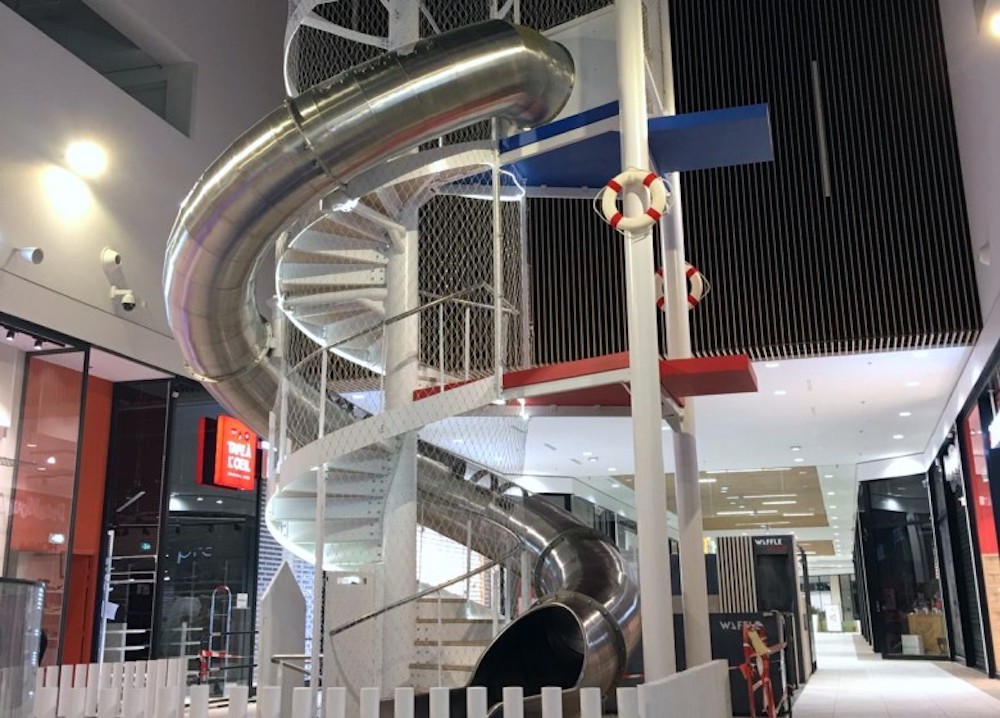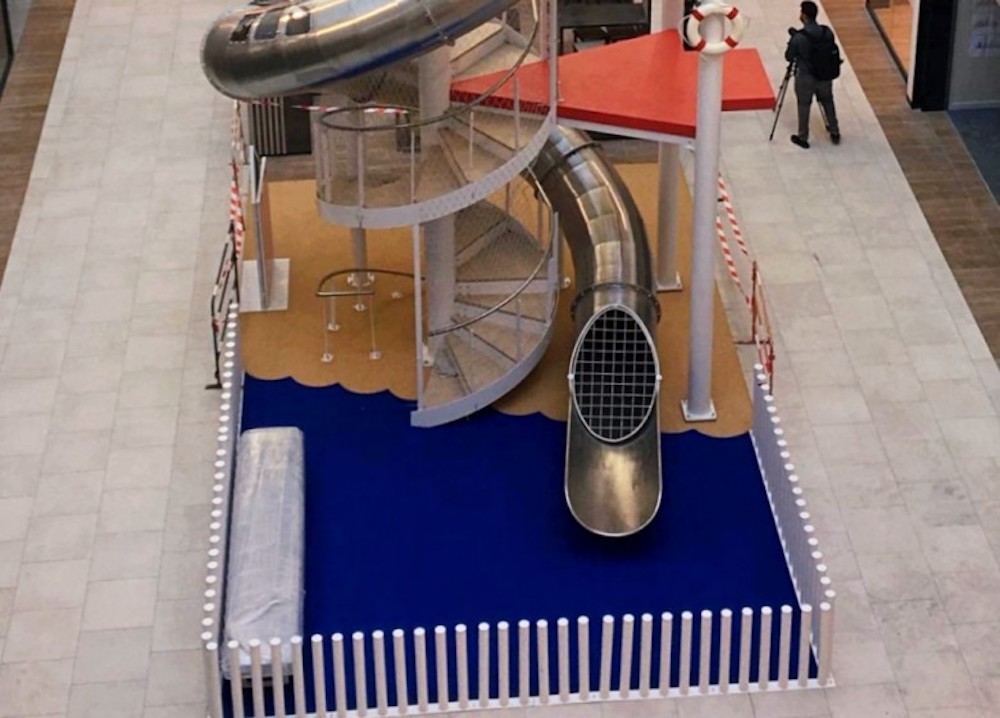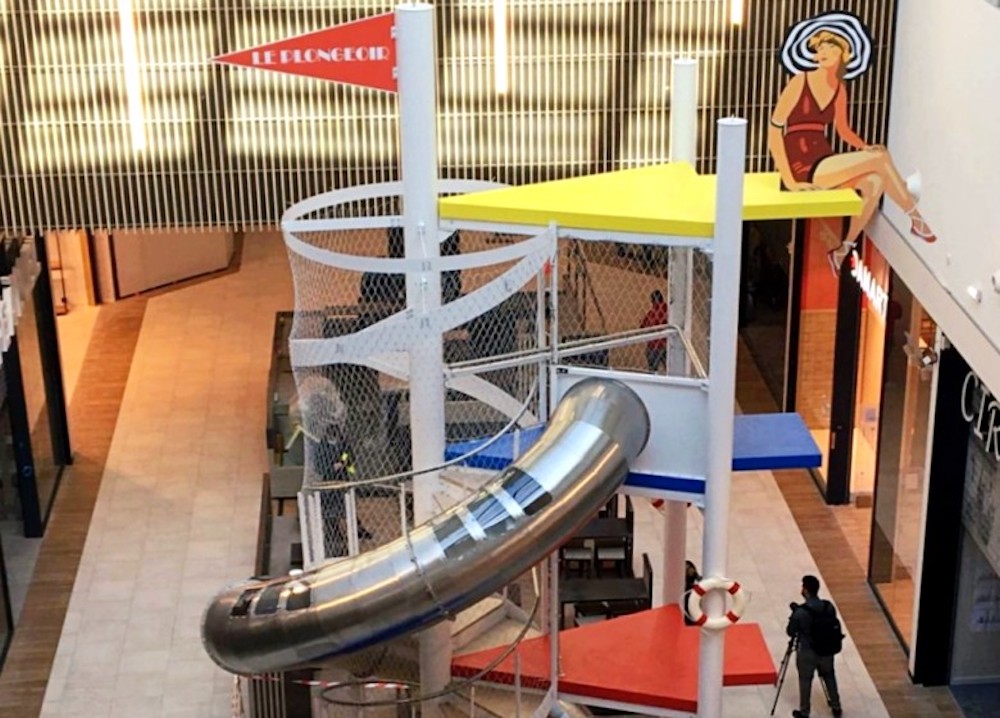
Forms of play in shopping malls: our point of view
The sight of a steel slide in a shopping mall no longer surprises anyone. Although most of them are dedicated to children, we know of at least three large-scale stores in Poland that have invested in a spiral tube slide. What is the purpose of such an investment?
Some of us go to the mall for shopping, others for window shopping, yet others just for the entertainment services, from the most popular cinemas to lesser-known forms of fun and leisure.
The proportion of retail to entertainment is constantly discussed by experts. Knight Frank report on the shopping center trends of 2016-2018, notes that “the share of entertainment and food and beverage tenants is currently around 13%.”
From a business point of view, it’s worth finding out “where the industry is going”. As early as 2017, experts like Inquiry Market Research noted:
Now malls must design the entirety of the customer path, tying together the individual elements into an engaging experience
Currently we experience the growing popularity of sports attractions, like climbing walls in spectacular locations or entertainment events such as fashion shows and photo exhibitions. But where do slides fit into this?
As we learn from the aforementioned Knight Frank report is:
“For today’s consumers, quality of life, in its broadest sense, is increasingly important. It consists of free time, harmony, family, friendship and relations, self-fulfillment, possibility to develop one’s passions, which are placed above having material goods. […] As a result, expectations towards shopping malls are changing, they are no longer places where we just do shopping. The kind of experience and emotions associated with a brand are starting to count.
Malls are therefore becoming places where additional services, entertainment and recreation (so-called shoppertainment) are becoming more important.”
This is where the answer lies:
Sliding connects generations, is an endorphin generator, and for many people is an unforgettable experience that can be associated with a location or brand.
ACCESSIBILITY
Publicly accessible steel slides are becoming more and more desirable around the world. They are designed to entertain children, who tend to be tired and bored of shopping or waiting for their meal. What makes these slides in shopping malls stand out is the thoughtful themes and the aesthetics. All with elaborate details and finishes. This is possible thanks to interior designers who are now invited to join the commissioning and implementation process of playground design.
Only relatively few companies in Poland design children’s spaces professionally. Osom Group cooperates with architect offices, to share its knowledge of producing children’s attractions for over 20 years in the water parks industry.
Accessibility is the biggest upcoming challenge in play equipment design. Whereas in the past playgrounds used to be occupied exclusively by children, nowadays, caregivers more and more often join children in playing together. Small architecture needs to take this aspect into account. Slides and their structures have to be developed with adults in mind, i.e. a person of a different size than 6-year-old children.
The challenge for manufacturers of tube slides is precisely the aspect of public accessibility while maintaining all safety standards. Thanks to special software, we can simulate the sliding person trajectory, so that the design ensures safety and comfort.
All the above trends – accessibility, aesthetics, and safety are the foundation for our design today.
Among them, accessibility is the biggest challenge facing slide designers today.
We are working on the ideas that will make steel slides available to people with limited mobility.
MISFORTUNES
Slides for adults require setting the start of the slide at a height of min. 4 meters. Not every shopping center has the necessary free space of 5 meters upwards or a free zone at the exit of the slide (3 meters wide to the border of the pedestrian zone). Without meeting the minimum technical criteria, they can only consider attractions outside the building.
Another challenge to be considered before installing a support structure for a slide is adequate floor thickness. After the static calculation for the structure and the transfer of the load response, it might be necessary to reinforce the floor.
CONCLUSIONS
How much retail is in the mall? Still over 80%. But even boutiques are looking for forms of presentation that leave the potential customer with a positive experience, not just a product.
A well-located slide will not only be an icon image of the mall or a carrier of advertising. Above all, it is a place of positive experience and memories for visitors, which strongly helps to build a positive image of the entire facility.






